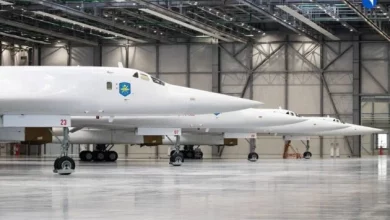U.S. Air Force plans to buy more F-15EXs

The Department of Defense has requested $3.1 billion in its Fiscal Year 2026 budget to continue procurement of the F-15EX Eagle II.
The budget request was publicly detailed on June 26, 2025, during a briefing at the Pentagon.
The funding supports additional production of the F-15EX, a fourth-plus-generation fighter developed by Boeing, intended to replace aging F-15C/D airframes and complement the service’s fifth-generation platforms.
The F-15EX is equipped with advanced avionics, an open mission systems architecture, and increased payload capacity. It can carry up to 12 air-to-air missiles and is being evaluated for future integration with hypersonic weapons. The aircraft is designed for extended range and survivability, providing a conventional complement to stealth aircraft in contested airspace.
In a speech on April 29, 2025, President Donald J. Trump announced that the F-15EX also will take over the role currently held by the A-10 Thunderbolt II within the Michigan Air National Guard. Airmen from the 127th Wing were briefed on the planned transition, which reflects broader efforts to retire legacy airframes while maintaining close air support and air superiority capabilities.
The F-15EX is based on the F-15QA developed for Qatar but modified for U.S. Air Force requirements. It features fly-by-wire controls, a modern cockpit, digital backbone, and a radar with increased target tracking capabilities. The aircraft is expected to reduce maintenance hours per flight and allow for more rapid software and system upgrades.
If approved, the FY2026 request would fund additional aircraft procurement and associated long-lead items, helping ensure production continuity and supply chain stability. Boeing’s F-15EX program supports hundreds of suppliers across more than 40 states, contributing to the broader defense industrial base.
The Department of Defense has not disclosed how many new aircraft would be acquired under the $3.1 billion request. However, officials have previously indicated that the long-term program objective is to purchase up to 104 F-15EX fighters to replace the existing F-15C/D fleet.
Congress is expected to review the proposal as part of broader deliberations on the defense budget. The request comes as the Air Force balances investments in next-generation programs, such as NGAD, with the need to sustain combat-ready forces using proven platforms.





